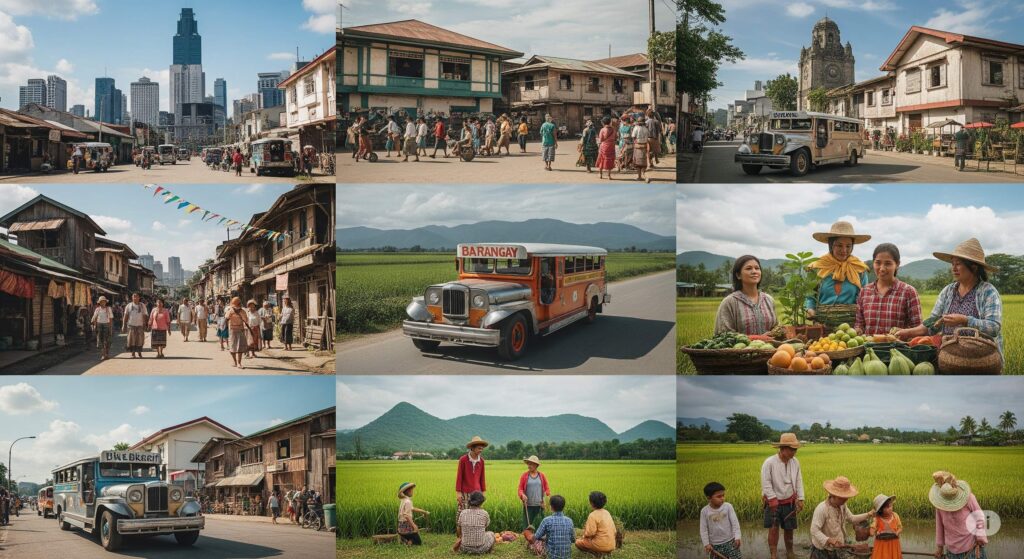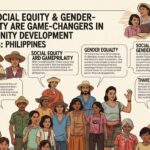Let’s Explore Different Definitions of “Community”!
Step 1: Warm-Up Question
💬 Quick Think:
Type “community” into the chat. What’s the first thing that comes to mind? A neighborhood? Friends? A hashtag? There’s no wrong answer—just your thoughts!
Example: For me, it’s my local coffee shop where everyone knows each other’s names ☕.
Step 2: Let’s Break Down the Perspectives
We’ll explore 4 lenses to define “community.” Ready?
🔍 1. Social Sciences Perspective
Definition:
A group of people who share traits like culture, location, or values and interact in structured ways.
Key Features:
- Focuses on relationships, norms, and shared identity.
- Asks: How do people connect? What rules or traditions shape their interactions?
Example:
A tight-knit immigrant neighborhood where families celebrate the same holidays and support each other’s businesses.
❓ Reflect:
Think of a group you belong to (e.g., a sports team, religious group). What shared traits bind you together?
🏛️ 2. Institutional Perspective
Definition:
A community is defined by formal organizations (governments, schools, hospitals) that provide structure and services.
Key Features:
- Focuses on rules, hierarchies, and systems.
- Asks: Who’s in charge? What services keep things running?
Example:
Your city council organizing trash collection or funding public schools.
💡 Quick Check:
What’s one institution in your life? How does it shape your community?
✊ 3. Civil Society Perspective
Definition:
A network of voluntary groups (NGOs, activists, nonprofits) working for the public good.
Key Features:
- Focuses on advocacy, collective action, and social change.
- Asks: Who’s fighting for justice or equality?
Example:
A climate action group organizing protests to demand renewable energy policies.
🌍 Connect:
Can you name a civil society group (local or global)? What cause do they support?
🌱 4. Local/Grassroots Perspective
Definition:
A community is people in close proximity collaborating informally to solve local issues.
Key Features:
- Focuses on neighbors helping neighbors, no formal rules.
- Asks: How do people work together day-to-day?
Example:
A neighborhood potluck to support a family in need or a community garden.
🏡 Reflect:
What’s one problem your own community could solve together?
Step 3: Compare & Contrast
📊 Let’s Summarize:
| Perspective | Focus | Example |
| Social Sciences | Relationships & culture | Ethnic neighborhood |
| Institutional | Formal systems & services | City government |
| Civil Society | Advocacy & activism | Climate protest group |
| Local/Grassroots | Informal neighborly support | Community garden |
❓ Discussion Prompt:
Which perspective do you think is most important for solving problems? Why?
Step 4: Synthesis Activity
✍️ Mini-Challenge:
Pick a real or imaginary community issue (e.g., littering, loneliness). How would each perspective address it?
Example:
- Social Sciences: Study why people litter and create anti-litter campaigns.
- Institutional: The city adds more trash cans.
- Civil Society: Activists organize a “Clean Streets” march.
- Grassroots: Neighbors host a weekly cleanup day.
Type your ideas in the chat or brainstorm privately!
Step 5: Wrap-Up & Key Takeaways
🌟 Remember:
- No single definition of community fits all—it’s a mix of relationships, systems, activism, and local action!
- Your perspective might depend on your goals: Are you studying culture, fixing a problem, or fighting for change?
📚 Homework (Optional):
Research a community you admire. Which perspectives do they use?


